简体中文
繁體中文
English
Pусский
日本語
ภาษาไทย
Tiếng Việt
Bahasa Indonesia
Español
हिन्दी
Filippiiniläinen
Français
Deutsch
Português
Türkçe
한국어
العربية
What Is a Forex Card? The Thorough Guide for International Travelers
Abstract:For the vast majority of international travelers—from students on a tight budget to families seeking security or professionals managing expenses—a forex card is an excellent, and often superior, financial choice. It effectively combines the security of a card with the budget discipline of cash, all while protecting you from the volatile fees of traditional banking products. By choosing the right forex card, you empower yourself to travel with more confidence, security, and financial peace of mind.
A forex card is a prepaid travel card designed to make your international spending secure, predictable, and cost-effective. Think of it as a dedicated wallet for your trip. Before you travel, you load it with the currency of your destination, such as U.S. Dollars, Euros, or British Pounds, at a fixed exchange rate. This is its key difference from a standard debit or credit card, which converts your money at the changing market rate every time you make a purchase. The main purpose of a forex card is to protect you from currency changes and hidden fees, making your travel budget easier to manage. This guide is designed to be your single, complete resource for understanding, choosing, and using a forex card to its full potential, ensuring your focus remains on your journey, not on financial worries.
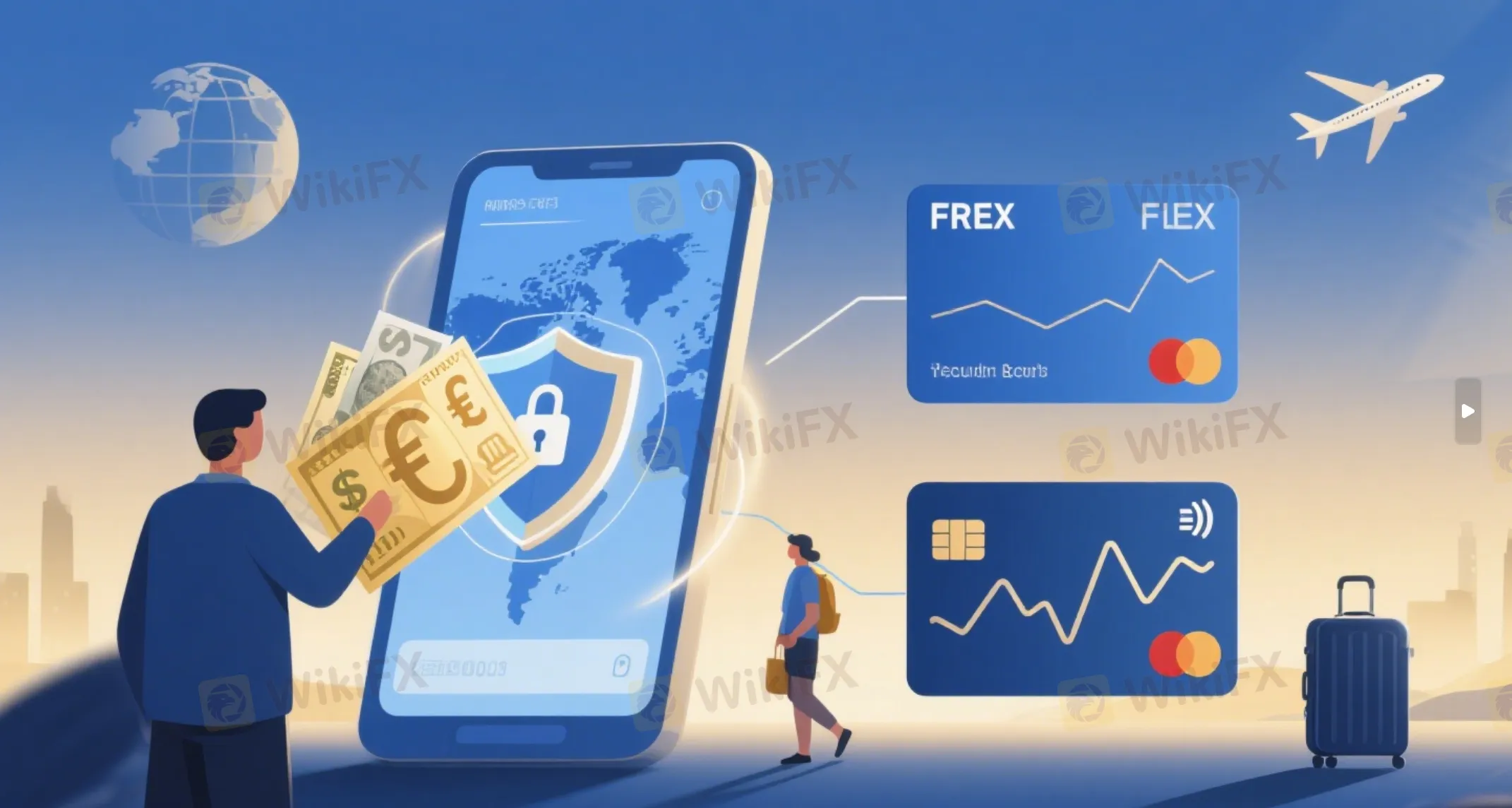
How Forex Cards Work
Understanding how a forex card works is simple. The entire process is designed for traveler convenience, from loading funds before you leave to using it easily abroad. It breaks down into a few key steps that change how you manage money internationally.
Pre-loading and Locking Rates
The main advantage of a forex card lies in a powerful two-part concept. First is pre-loading. Before your trip, you decide how much foreign currency you will need and transfer funds from your bank account onto the card. It's like topping up a gift card, but with a currency like Euros or Yen instead of your home currency.
The second, and most important, part is locking the rate. The exchange rate is fixed on the day you load the money onto the card. This provides huge value by offering rate protection and budget certainty. You are completely protected from unfavorable shifts in the currency market during your travels. For example, if you load $1,000 onto your card at an exchange rate of 1 USD = 0.92 EUR, you will have exactly 920 EUR available to spend. It doesn't matter if the market rate drops to 1 USD = 0.90 EUR the next day; your 920 EUR balance stays the same. This predictability allows you to budget with precision, knowing exactly how much spending power you have.
Using the Card Abroad
Once you arrive at your destination, using a forex card feels identical to using a familiar debit or credit card. They are issued on major payment networks like Visa or Mastercard, guaranteeing widespread acceptance at millions of merchants worldwide. You can swipe or tap your card at Point-of-Sale (POS) terminals to pay for meals, souvenirs, train tickets, and hotel bills. From our experience, the process is smooth and gives confidence, as you're not mentally calculating conversion rates with every purchase. For times when you need physical cash, the card can be used at any ATM that supports its network (e.g., a Visa-branded card at a Visa-supported ATM) to withdraw local currency.
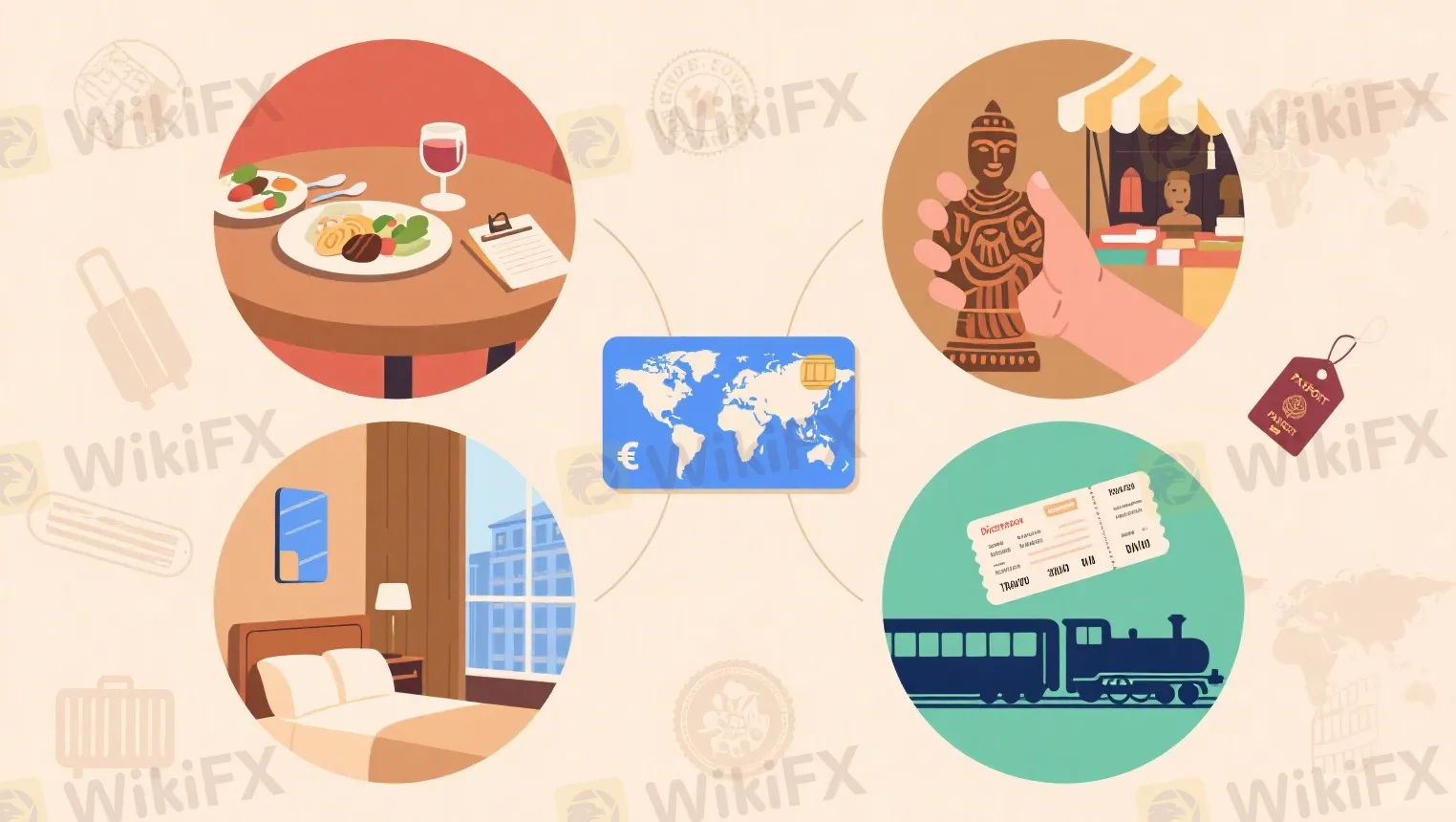
Reloading on the Go
Running low on funds mid-trip is a common scenario, and forex card issuers have made the reloading process straightforward. You don't need to visit a bank branch. Instead, you can typically add more money to your card through one of several convenient methods:
- The issuer's dedicated mobile application
- An online banking portal on the issuer's website
This allows you to top up your card from your hotel room or a coffee shop with a Wi-Fi connection. It is important to remember that any funds reloaded during your trip will be converted at the exchange rate available on that specific day, which may be different from your initial locked-in rate.
Forex Card vs. Other Options
Choosing how to carry money abroad is one of the most critical pre-trip decisions. While cash, debit cards, and credit cards are traditional options, a forex card often presents a superior blend of cost-effectiveness, security, and convenience. The best choice ultimately depends on your travel style and financial priorities.
Feature Breakdown
To make an informed decision, it's essential to compare these options side-by-side across the factors that matter most to a traveler. The following table provides a clear, data-driven breakdown.
| Feature | Forex Card | Credit Card | Debit Card | Cash |
| Exchange Rate | Locked-in rate, protecting you from market changes. | Live market rate at the time of transaction, which can be volatile. | Live market rate, often with a less favorable bank-determined rate. | Very poor rates at airport kiosks or city exchange bureaus. |
| Transaction Fees | Usually low or zero for transactions in the loaded currency. | High foreign transaction fee (FX markup), typically 2.5-3.5% of the purchase amount. | High FX markup (2.5-3.5%) plus potential fixed fees from your bank. | No transaction fees, but the initial poor exchange rate is a hidden cost. |
| ATM Withdrawal Fees | A fixed, pre-disclosed fee per withdrawal. | Very high fees, often treated as a “cash advance” with immediate, high-interest charges. | High foreign ATM fees from your bank plus potential fees from the local ATM operator. | Not applicable. |
| Security | High. Chip & PIN protected. Not linked to your main bank account, limiting potential loss. Easily blocked if lost. | High. Strong fraud protection and chargeback capabilities. Easily blocked. | Medium. PIN protected, but directly linked to your primary bank account, posing a greater risk. | Very low. High risk of theft or loss with no way to recover funds. |
| Budgeting Control | Excellent. You can only spend the pre-loaded amount, preventing overspending. | Poor. The line of credit makes it very easy to spend more than you budgeted for. | Good. Spending is limited by your current bank account balance. | Good. You can only spend the physical cash you have on hand. |
| Acceptance | Wide. Accepted globally wherever Visa or Mastercard is supported. | Wide. Accepted globally and often required for hotel or car rental security deposits. | Wide. Accepted where Visa/Mastercard is supported, but some smaller merchants may not accept it. | Limited. Not practical for large purchases, online bookings, or security deposits. |
Scenario-Based Recommendations
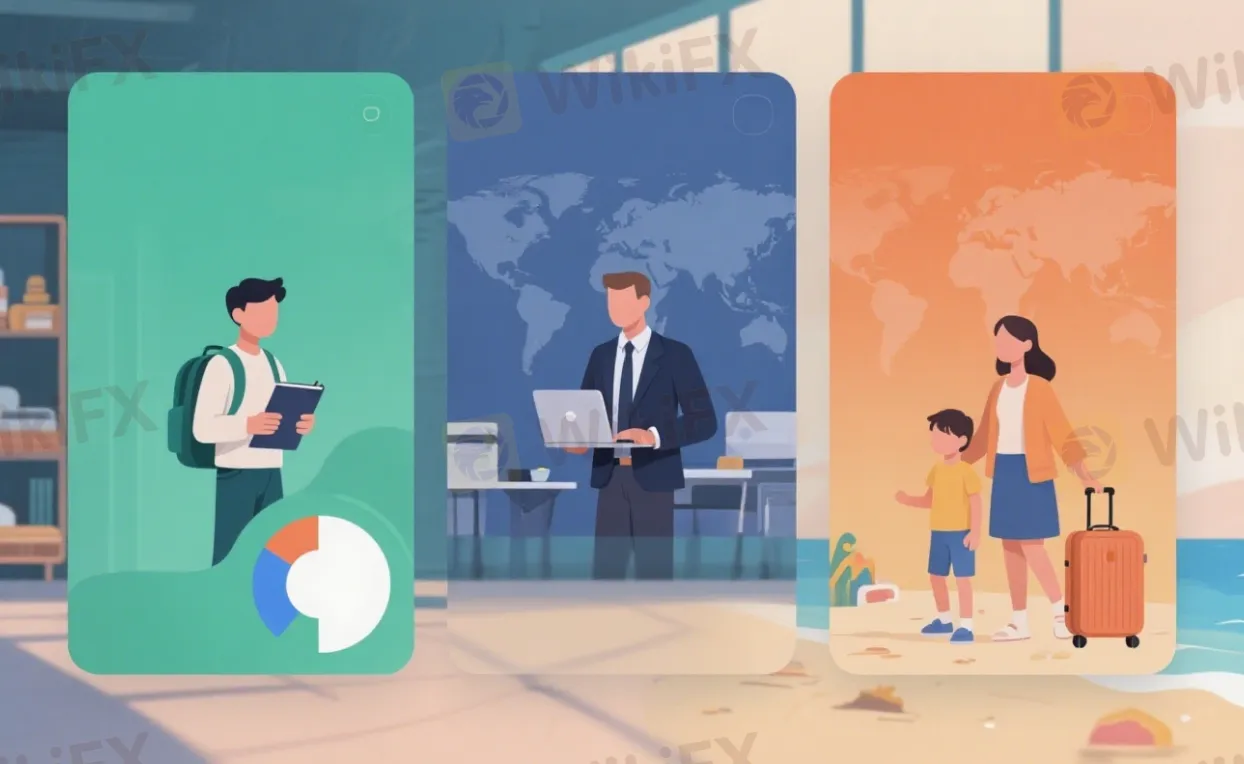
- For the Budget-Conscious Student
A forex card should be your primary financial tool. The locked-in rate and pre-loaded balance provide strict budgeting control, which is essential when managing limited funds for a semester abroad. It prevents surprise costs from currency changes or high bank fees. We recommend supplementing it with a small amount of local cash for minor purchases at street markets or small cafes where cards might not be accepted.
- For the Business Traveler
Efficiency and clear expense tracking are key. A combination approach works best. Use a company credit card for major, pre-approved expenses like flights and hotels, as these often require a credit card for holds. For daily spending, meals, and transport, use a forex card loaded with a per-diem amount. This simplifies expense reporting by isolating daily costs at a fixed exchange rate, avoiding the reconciliation headache of changing credit card charges.
- For the Family on Vacation
Security is most important. A forex card offers significant peace of mind because it is not connected to your primary savings or checking account. If the card is lost or stolen, the potential loss is limited to the balance on the card. Many providers also offer supplementary cards linked to the same account, which you can give to a spouse or responsible teenager, allowing for financial independence while maintaining overall control of the family travel budget.
Types of Forex Cards
Not all forex cards are created equal. They generally fall into two categories, and choosing the right one depends entirely on your travel itinerary. Selecting the correct type can save you from unnecessary fees and logistical headaches.
Single Currency Cards
A single currency forex card is designed to hold one specific foreign currency. For example, you can get a USD card for a trip to the United States, a GBP card for the United Kingdom, or a JPY card for Japan. This type of card is the perfect choice when your travels are confined to a single country or a currency zone, like the Eurozone, where multiple countries use the Euro.
- Pros: They are straightforward to manage and often come with lower issuance or annual fees compared to their multi-currency counterparts.
- Cons: Their biggest drawback is a lack of flexibility. If you use a USD-loaded card to make a purchase in London, you will be hit with a high cross-currency conversion fee, as the card's system must convert USD to GBP at a non-competitive rate.
Multi-Currency Cards
A multi-currency forex card is a more versatile and powerful tool for the modern globetrotter. It acts like a digital wallet with separate compartments, allowing you to load and hold several different currencies on a single card at the same time. For instance, you could load U.S. Dollars, Euros, and British Pounds onto one card for a trip that takes you from New York to Paris and then to London.
- Pros: The card is “smart” and will automatically deduct payment from the correct currency wallet. When you pay for a croissant in Paris, it uses your Euro balance; when you buy a souvenir in London, it uses your Pound balance. This provides ultimate flexibility and helps you avoid all cross-currency conversion charges during a multi-leg journey.
- Cons: These cards may sometimes have slightly higher issuance fees or more complex fee structures. However, for any trip involving more than one currency, the savings from avoiding conversion fees almost always outweigh these initial costs.
Getting Your Forex Card
Securing a forex card is a straightforward process that can be completed well in advance of your departure date. Following these steps ensures you're prepared and confident in using your new travel money tool. We'll walk you through the entire journey, from selection to activation, based on our extensive experience.
1. Choose Your Provider
The first thing you'll need to do is select a provider. Forex cards are offered by most major banks as well as specialized financial technology and foreign exchange companies. Banks offer the convenience of handling it where you already manage your finances, while specialized providers often compete with more aggressive exchange rates and lower fees. We'll cover how to compare them in a later section.
2. Gather Your Documents
To comply with financial regulations, you will need to provide a few key documents during the application process. It's wise to have these ready to ensure a smooth transaction. Typically, you will need:
- A valid Passport
- A valid Visa for the destination country (if required)
- Your airline ticket as proof of travel
- A completed application form provided by the issuer
3. Complete the Application & Load Funds
With your documents in hand, you'll fill out the application form. This is also the point where you will make the payment to load the card with your chosen foreign currency. You'll transfer the funds from your bank account, and the provider will convert it and load it onto the forex card. A crucial step we always emphasize: this is the moment your exchange rate is locked in. You will receive a confirmation detailing the rate and the final foreign currency amount credited to your card.
4. Receive and Activate Your Card
After processing, the provider will send you a “welcome kit,” typically within a few business days. This kit contains your new forex card and, in a separate, secure mailing, your Personal Identification Number (PIN). For security, the card will be inactive. Activation is a simple but mandatory step, usually completed by logging into the provider's online portal or calling a designated automated phone line.
5. Before You Travel - A Final Check
Before packing the card into your travel wallet, complete a few final checks. First, sign the signature strip on the back of the card. Second, memorize your PIN; never write it down and keep it with the card. Finally, a pro-tip we always recommend is to take the card to a local ATM in your home country. You can insert it and enter the PIN to check the balance (do not attempt to withdraw cash). This quick test confirms that the card is active and your PIN is working, preventing any unwelcome surprises when you arrive abroad.
Expert Tips and Hidden Fees
While forex cards are designed to save you money, not all providers are transparent about their fee structures. Being aware of potential charges and knowing a few insider tricks can elevate you from a regular traveler to a savvy one, maximizing the value of your card and avoiding common pitfalls.
Watch Out for Hidden Fees
Beyond the exchange rate, a provider's profitability often lies in a series of smaller fees that can add up. A crucial part of our advice is to always read the fine print. Here are the common fees to look for:
- Issuance/Joining Fee: A one-time fee charged for issuing the card. Some providers waive this as a promotion, while others charge a nominal amount, often around $5-$15.
- Reload Fee: A fee charged every time you top up the card with more funds. This can be a flat fee (e.g., $5 per reload) or a percentage of the reload amount.
- Inactivity Fee: This fee can catch many travelers off guard. If your card has a balance but remains unused for an extended period (typically 6 to 12 months), the issuer may start deducting a monthly “inactivity” or “maintenance” fee until the balance is zero.
- Cross-Currency Conversion Fee: This is a significant charge, often 3-5%, applied when you use your card in a country for which you have not pre-loaded the currency. For example, using a Euro-loaded card in Switzerland (which uses Swiss Francs) will trigger this fee. This is why choosing a multi-currency card for multi-country trips is essential.
- Cash-out/Refund Fee: After your trip, if you have a significant balance left on the card, you can convert it back to your home currency. However, providers charge a fee for this service, and the exchange rate they offer for buying back the currency is often less favorable.
Pro-Tips to Maximize Value
1. ALWAYS Decline Dynamic Currency Conversion (DCC)
This is the single most important tip for using any card abroad. At a shop or ATM, you may be presented with a choice: “Pay in Local Currency (EUR)” or “Pay in Your Home Currency (USD).” It seems helpful, but it's a trap. This is Dynamic Currency Conversion (DCC). If you choose to pay in your home currency, you are allowing the local merchant's bank to perform the currency conversion on the spot, almost always at a terrible exchange rate loaded with hidden markups. Always, without exception, choose to pay in the local currency. Your forex card will then handle the transaction correctly without extra charges (if the currency is loaded).
2. Understand the “Spread”
The exchange rate you see on Google or financial news sites is the “mid-market rate.” This is the wholesale rate banks use to trade with each other. As a consumer, you will never get this rate. Providers make money on the “spread”—the difference between the rate at which they buy currency (the bid rate) and the rate at which they sell it to you (the ask rate). Your goal is to find a provider with the narrowest, most competitive spread, as this means more foreign currency for your money.
3. Don't Leave Small Balances
Because of cash-out fees and unfavorable refund rates, it rarely makes financial sense to convert a small leftover balance back to your home currency. A better strategy is to spend the last few dollars, euros, or pounds on your card before you head home. Use it to buy snacks at the airport, a magazine for the flight, or a coffee.
4. Keep Customer Service Info Separate
Before you leave, find the provider's 24/7 international helpline number for reporting a lost or stolen card. Save this number in your phone's contacts and also write it down on a piece of paper that you keep somewhere completely separate from your wallet, such as in your hotel room safe or a different bag. In a moment of panic, you'll be glad you have it easily accessible.
Choosing the Best Card
With a variety of banks and financial institutions offering forex cards, the choice can seem overwhelming. However, by focusing on a few key criteria, you can systematically compare your options and select the card that provides the best combination of value, convenience, and security for your specific travel needs.
Your 5-Point Selection Checklist
Use this checklist as a framework to evaluate and compare different forex card providers. Don't just look at one feature; a complete view is essential.
1. Exchange Rates & Spreads
This is the most significant factor impacting your overall cost. When you get quotes from different providers, don't just ask for the rate. Ask what the total amount of foreign currency you will receive for a specific amount of your home currency (e.g., “How many Euros will I get for $1000 today?”). This incorporates both the rate and any upfront fees, giving you a true “apples-to-apples” comparison. A provider with a lower “spread” will consistently give you more for your money.
2. Fee Structure
A great exchange rate can be quickly negated by high fees. Scrutinize the fee schedule for each card you consider. Look specifically for the fees we detailed earlier: issuance, reload, inactivity, ATM withdrawal, and cash-out fees. The ideal card has a transparent and minimal fee structure. A card with zero issuance fees but high reload and ATM fees might not be a good deal if you plan to top up frequently or withdraw a lot of cash.
3. Currencies Offered
Check that the card supports the currencies you need for your trip. If you are only visiting the United States, a single-currency USD card is sufficient. If you're planning a backpacking trip through Southeast Asia, you'll need a multi-currency card that supports Thai Baht, Vietnamese Dong, and other regional currencies. Verify the provider's list of supported currencies before applying.
4. Card Network and Acceptance
Confirm that the card is issued on a major international network, either Visa or Mastercard. These networks ensure your card will be accepted by millions of merchants and ATMs around the globe. A card on a smaller, less-known network could lead to frustrating acceptance issues, especially in more remote locations.
5. Customer Support & App Experience
When you're in a different time zone and facing a problem, reliable support is non-negotiable. Does the provider offer 24/7 international customer support via a toll-free number? Furthermore, evaluate their digital tools. A user-friendly mobile app that allows you to easily check your balance across different currency wallets, review transactions, and reload funds on the go is a massive advantage for any modern traveler.
Handling Loss or Theft
One of the biggest anxieties for any traveler is the thought of losing their wallet. While a lost forex card can be stressful, its security features and the support systems behind it make the situation far more manageable than losing a large amount of cash. Knowing the correct procedure in advance provides invaluable peace of mind.
Immediate Steps to Take
If you realize your forex card is lost or has been stolen, act quickly and calmly by following this emergency plan.
1. Contact the Issuer Immediately
This is the most critical step. Use the 24/7 international helpline number you saved before your trip. Report the card as lost or stolen. The customer service representative will immediately block the card, preventing any fraudulent transactions from being made.
2. Request an Emergency Replacement or Cash
When you call to block the card, inquire about emergency services. Many forex card providers offer solutions like emergency card replacement, where a new card can be couriered to your hotel within a few days. Alternatively, some offer emergency cash disbursement through a partner bank or money transfer service, giving you access to funds to tide you over.
3. Utilize Your Backup Card
Most forex card welcome kits come with two cards: a primary card and a backup card. If you followed our advice to keep the backup card in a separate, secure location (like the hotel safe), you can now activate and begin using it. This is the fastest way to regain access to your funds and continue your trip with minimal disruption.
Proactive Security Measures
Prevention is always the best strategy. Incorporate these simple security habits into your travel routine.
- Never write your PIN down, especially not on a piece of paper kept in the same wallet as your card. Commit it to memory.
- Sign up for transaction alerts. Most providers can send you an SMS or email notification for every transaction, allowing you to spot unauthorized activity instantly.
- Always keep your primary and backup cards in separate places. One should be in your wallet for daily use, and the other should be locked away securely with your passport.
Is a Forex Card Right?
After exploring the mechanics, benefits, and comparisons, the answer becomes clear. A forex card is more than just a payment method; it's a strategic tool for smarter travel. It offers a powerful combination of cost savings through locked-in exchange rates, superior budgeting control by limiting you to pre-loaded funds, and enhanced security by disconnecting your travel money from your main bank account.
For the vast majority of international travelers—from students on a tight budget to families seeking security or professionals managing expenses—a forex card is an excellent, and often superior, financial choice. It effectively combines the security of a card with the budget discipline of cash, all while protecting you from the volatile fees of traditional banking products. By choosing the right forex card, you empower yourself to travel with more confidence, security, and financial peace of mind.
Disclaimer:
The views in this article only represent the author's personal views, and do not constitute investment advice on this platform. This platform does not guarantee the accuracy, completeness and timeliness of the information in the article, and will not be liable for any loss caused by the use of or reliance on the information in the article.
Read more

Identifying 4 Key Features of "Cloned Platforms": Teach You to Spot Fake Websites at a Glance
Unmask phishing clones in forex trading—4 key signs like shady domains and no HTTPS. Arm yourself with verification tools from WikiFX for secure, scam-proof trading.
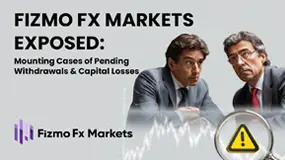
Fizmo Fx Markets Exposed: Mounting Cases of Pending Withdrawals & Capital Losses
Are your fund withdrawal requests pending at Fizmo Fx Markets? Do you get scammed of your hard-earned capital? Has your forex trading account been blocked by the broker for no reason? These trading issues are no longer a surprise for traders, as many of them have highlighted these on broker review platforms online. In this article, we will share some reviews of Fizmo Fx Markets 2025. Read on!
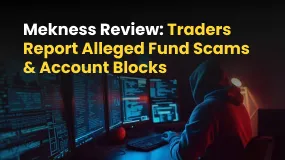
Mekness Review: Traders Report Alleged Fund Scams & Account Blocks
Do you witness only fund losses while trading via the Mekness platform? Does the Saint Lucia-based forex broker block your account while earning profits? Haplessly waiting for the support but nothing comes out from the broker’s end? These are nothing new for this forex broker as it constantly receives flak from traders for its illegitimate acts. Broker review platforms are flooded with negative comments from traders. In this article, we will share some reviews of Mekness.
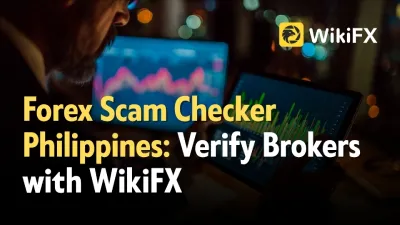
Forex Scam Checker Philippines: Verify Brokers with WikiFX
Protect your investments in the Philippines with WikiFX, the trusted forex scam checker app that helps traders verify brokers and avoid fraud.
WikiFX Broker
Latest News
Forex24 Faces CySEC Fine for Late Compliance Filing
"Our Business Has Died": Texas Services Sector Sentiment Slumps Further In October
One Wrong Move Wiped Out a Government Retiree’s Lifetime Savings
INTERPOL, AFRIPOL Crack Down on Africa Terror Finance
Forex Scam Checker Philippines: Verify Brokers with WikiFX
MH Markets Review 2025: Trading Platforms, Pros and Cons
Mekness Review: Traders Report Alleged Fund Scams & Account Blocks
Octa FX in Pakistan: The Complete Guide to Local Payments, Regulation, and Support
D Prime to Exit Limassol Office Amid Doo Group Restructure
Philippines Digital Fraud Crisis 2025: $8.29B Scam Losses Soar
Currency Calculator



